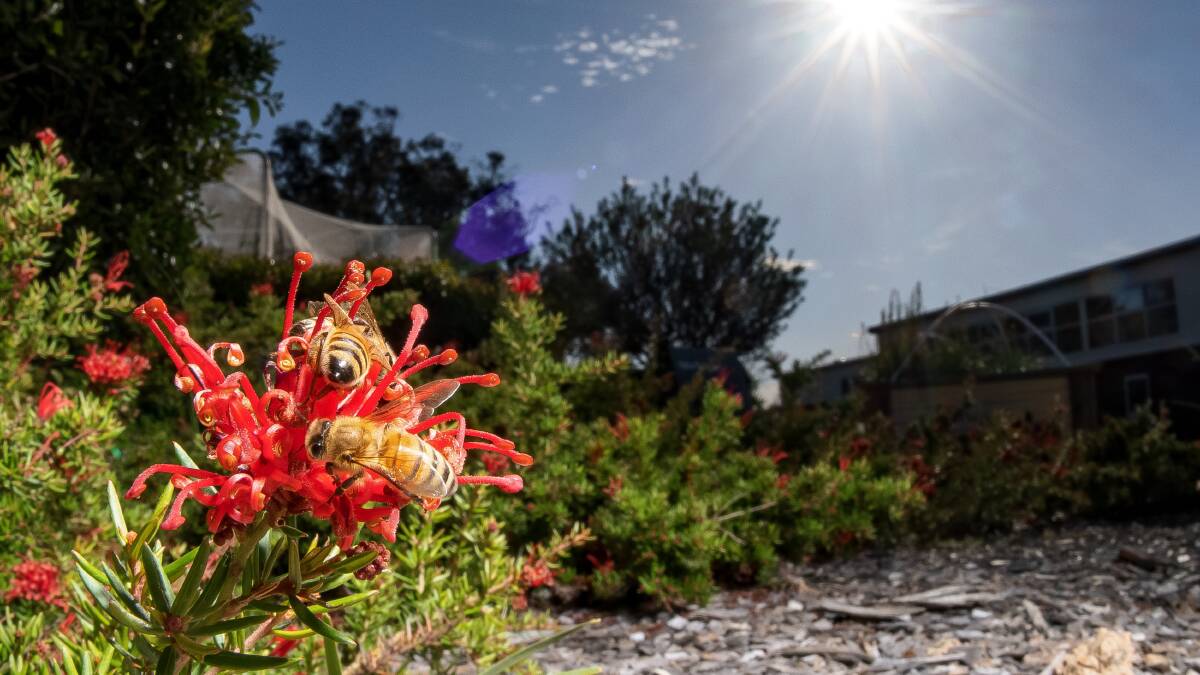
Caitlin Ross was taken to hospital with asthma on October 29.
Since then, she has lived in pain and fear in what is now Canberra's worst pollen year on record.
On the worst days, she is in a state which doctors describe as "life-threatening".
She does go out to work, but only with very high doses of medication.
"It's never been this bad. It's just pushed it to a new level," she said.
Her desperate situation is set continue.
Canberra's pollen count was forecast as "extreme" for Wednesday, and with no sign of a let up for hay fever sufferers and asthmatics in the New Year.
There have already been 27 "extreme" days for pollen this spring and summer and that's smashed the previous record of only seven.
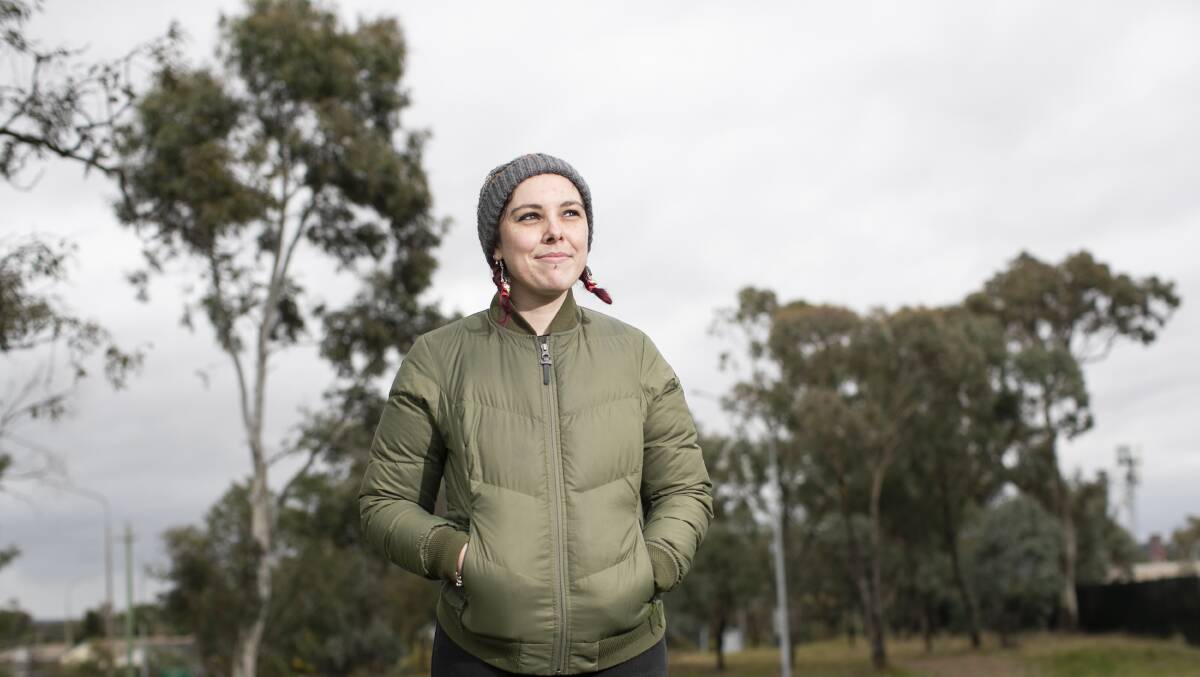
So bad has the pollen been that over the past week, many Canberrans who have not had hay fever before, or not for many years, have suddenly been stricken with sneezing and sore eyes.
Their plight will not go away.
"Our forecast is that we will see these elevated levels into January," Professor Simon Haberle of Canberra Pollen said.
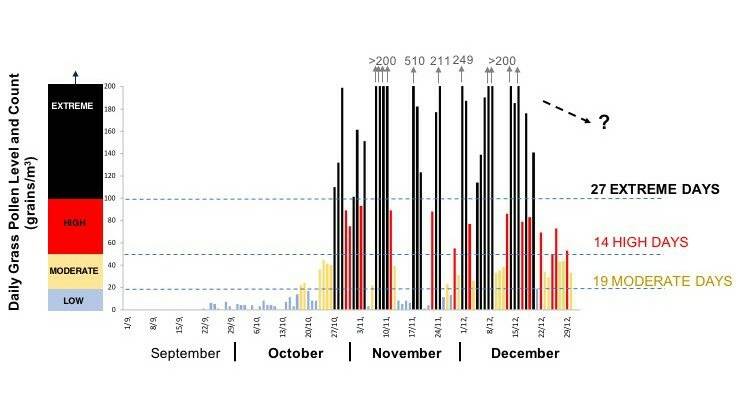
He and his colleagues at the Australian National University are studying pollen counts to see how climate change might affect them.
He doesn't quite say that climate change is causing the record-breaking pollen levels but he suspects it is.
"I think there will be a climate change component to this. We are trying to understand what climate change will do to the pollen in the air we breathe," he said.
The heavy rain of December 18 and 19 prompted the latest thunderstorm pollen warning, and the following days seemed to bring an increase in pollen levels and hay fever.
Heavy rain dampens pollen initially but then liberates it in bigger clouds a few days later.
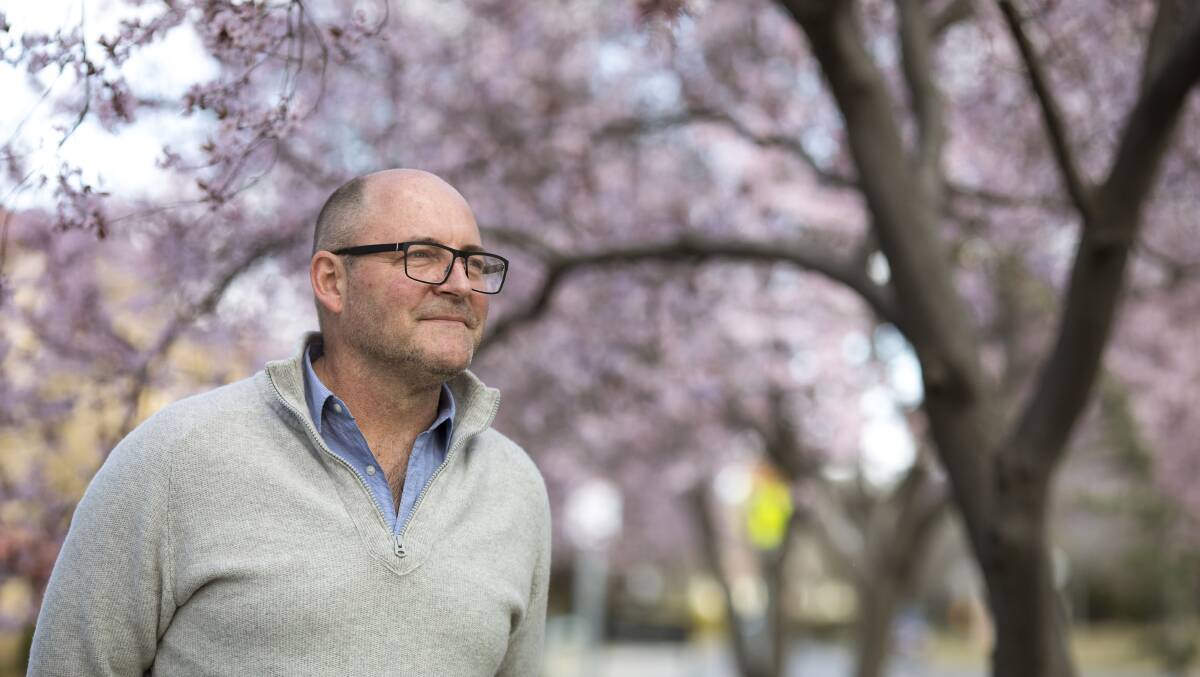
Satellite imagery indicates that there is much more vegetation in this part of Australia than in other years, perhaps because the torrential rains after the drought prompted abundant growth.
Canberra has the highest number of people suffering from hay fever compared to any other major city in Australia, with nearly a third of residents suffering from sinus issues.
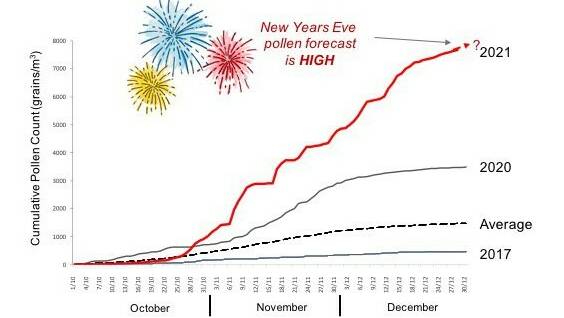
The bush capital's pollen woes are so bad that it's estimated they cost the ACT economy nearly $170 million a year due to the impacts on health, happiness and productivity.
Professor Haberle wonders if the pattern of pollen production is changing. The big question is whether, unusually, there will be a secondary wave towards the end of January as sub-tropical plants come into bloom.
Professor Haberle said the warming weather following a wet winter created ideal conditions for extreme pollen.
"A combination of the warming weather, a wet winter with high soil moisture and windy days are all signs that are pointing to another record pollen season," he said.
"On August 12, we saw our first extreme allergenic pollen day of cypress pine pollen, which was followed on August 16 by another extreme cypress pollen day in combination with high pine pollen as well."
Major pollens impacting the ACT region include cypress pine, pine spores, ash trees and fungal spores.







